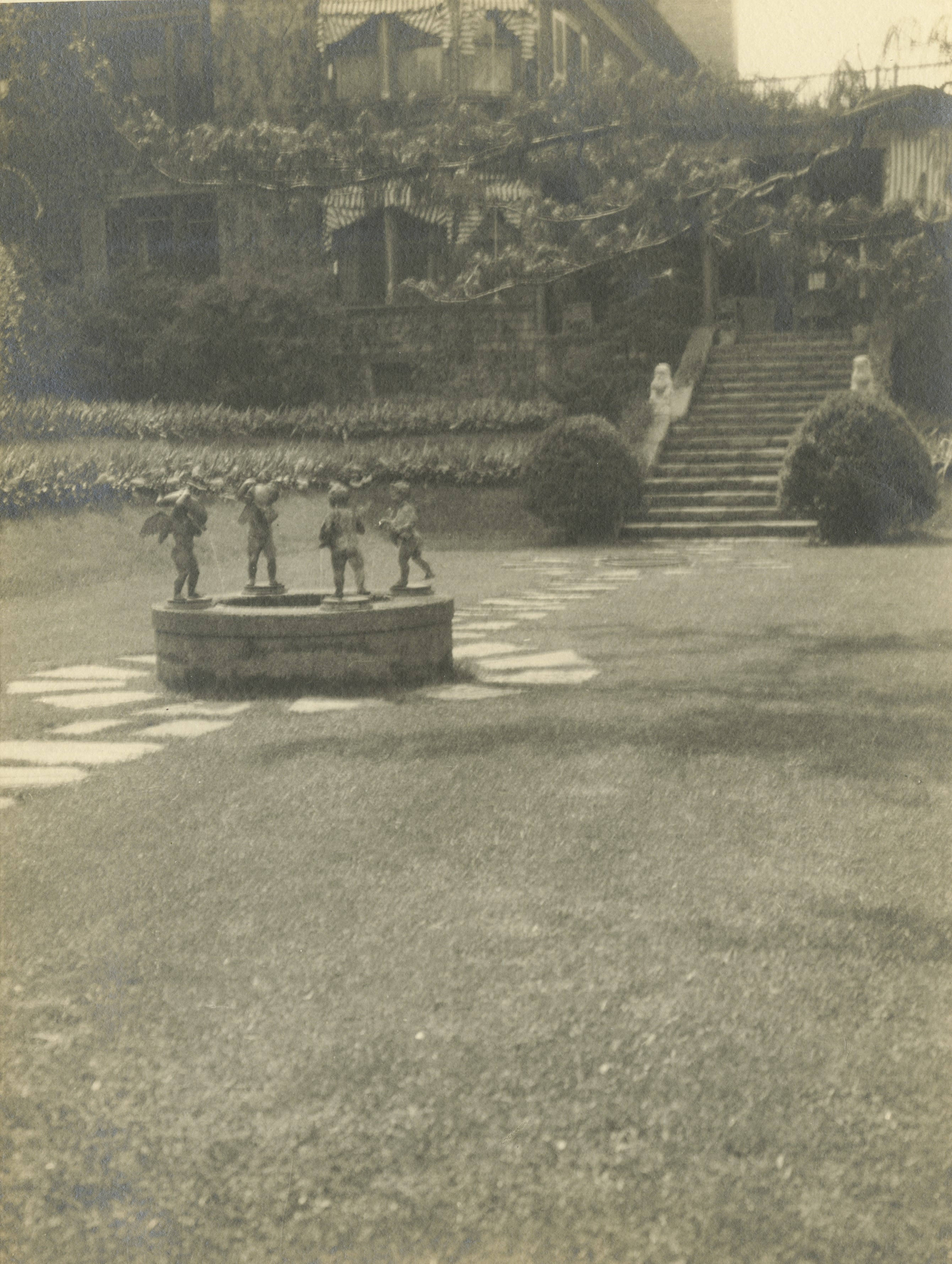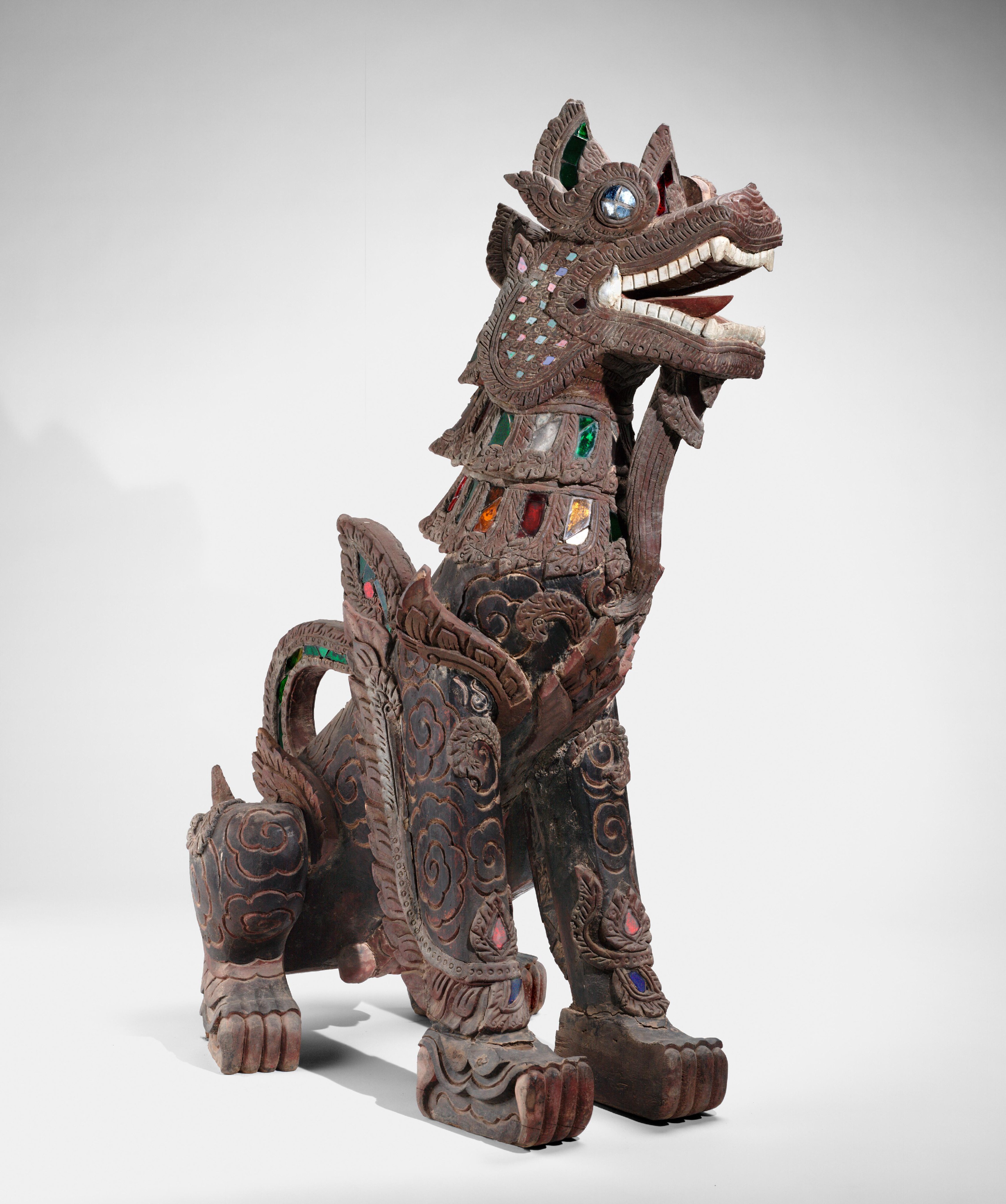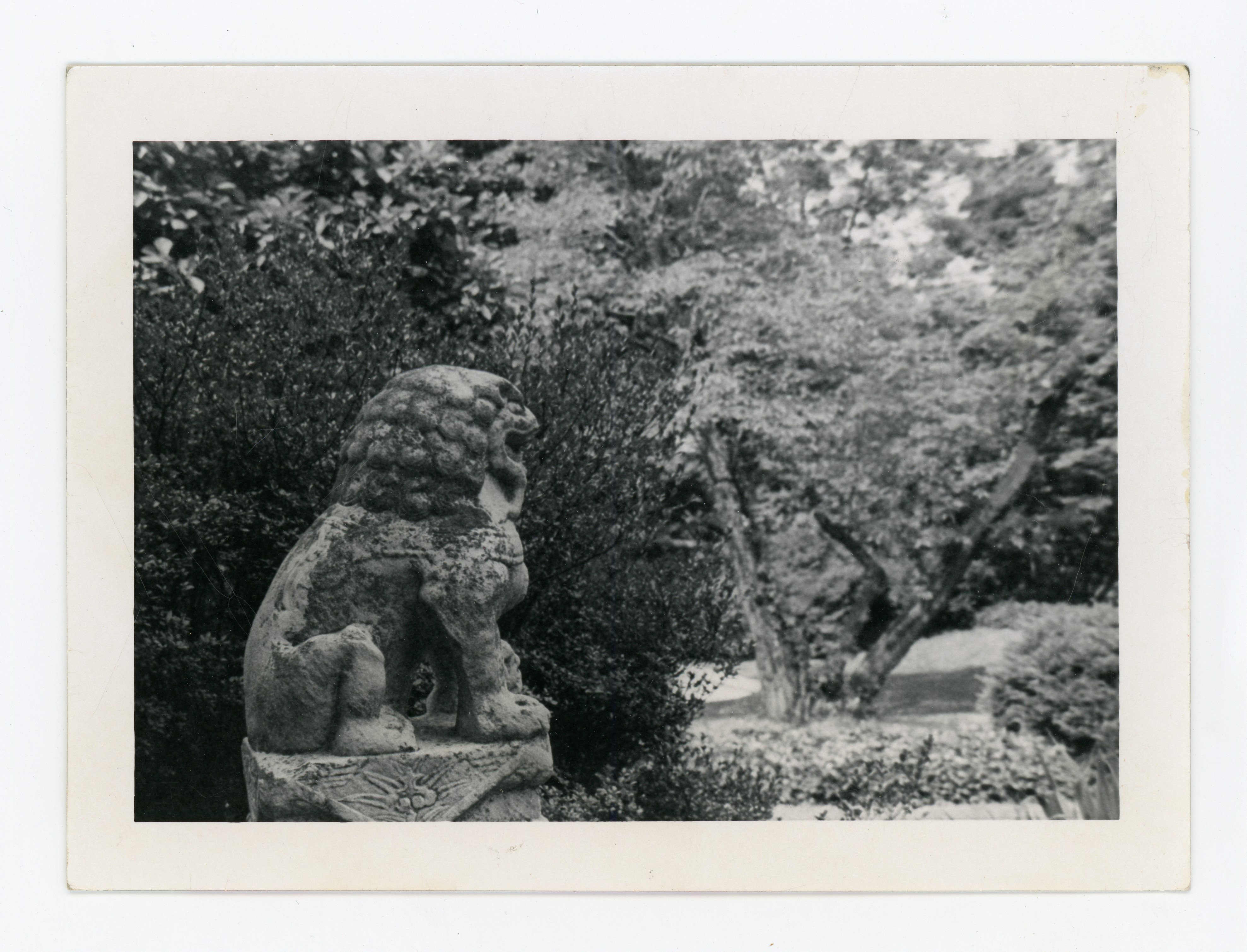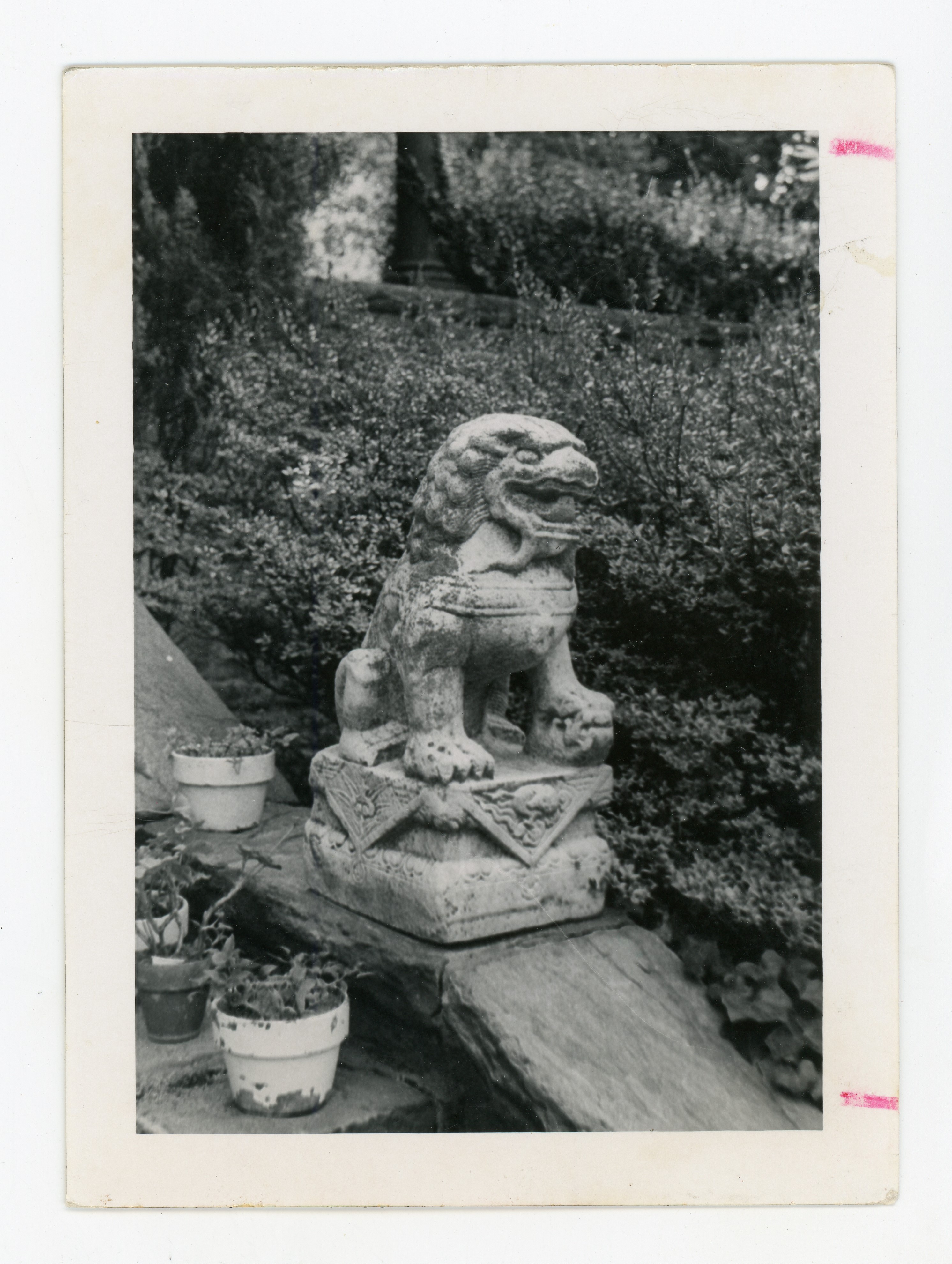This week I’m taking a break from heavy topics and talking about something a little more lighthearted. Did you know that Taft Garden used to have two large stone lions the size of child on the steps leading down to the garden? Me neither. Since the beginning of the summer, I have been haunted by these two lions that used to be in Taft Garden. How did they get to Bryn Mawr and where did they go?

Like many thing at Bryn Mawr, it all started with M. Carey Thomas. In 1917, Thomas travelled to Beijing in hopes of buying some silks for the Deanery. While she was traveling, Thomas somehow stumbled upon two old, stone guardian lions which the sellers claimed to be over 1000 years old, Thomas was skeptical of this claim, but nonetheless she was determined to have them. In fact, even before she had bought the lions, she had decided that the lions “would be charming in a retired corner of the Deanery garden - perhaps at the foot of the stone steps leading to the terrace under the wall where I hang a hammock” (Thomas Personal Papers reel 33). She managed to purchase the two guardian lions for $75. Though shipping was difficult according to Thomas, eventually the stone lions made it back to the US and into Taft Garden (Deanery garden).
Probably unbeknownst to Thomas, the two guardian lions she brought back have a long cultural history in China. The best translation for their names would be guardian lions. In English, the lions are often referred to as “foo dogs,” as the stylized lions have often been mistaken for Asian dogs like a chowchow. Foo dog or guardian lion, the terms are referring to the same thing. However, regardless of terminology, there is one thing that is certain, most people associate these statues with China or East Asian in general. But did you know they did not actually originate in East Asia?
During the Han dynasty (206 BCE - 220 CE), China began to open up to trade into Central Asia and the Middle East through the Silk Road. It is commonly believed that the first iteration of stone lions were introduced by Persian diplomats as a gift. Though lions were not native to China, the symbol of the guardian lions was quickly incorporated into Chinese culture. One reason for this adoption could be because Chinese Buddhism considers lions to be protectors, so the stone guardian lion statues easily fit into pre-existing cultural beliefs of the time. Over China’s many dynasties, the shape and style of the guardian lions evolved to fit each time period. Guardian lions also spread to other parts of Asia, which is why there are so many forms the guardian lions can take, with the style often reflecting the country of origin.

If you’ve ever been to China — or even Chinatown in Philly, you’ve probably noticed that some businesses have two guardian lions outside the entrance. This is intentional. guardian lions typically come in pairs, with a male and female lion. The gender can be easily determined as the male lion has an embroidered ball under his paw, while the female lion has a cub under her paw. In both lions, if you look closely, there should be a pearl ball trapped behind their teeth. When facing the guardian lions, the male lion should be on the right and the female lion should be on the left. The placement is partly due to the idea of yin (female - left) and yang (male - right), which refers to the idea of balance in the world. That’s also why the guardian lions also come in pairs, to have balance. In addition, the stone lions typically face outwards — as guards — if they are placed by an entryway, at least from my own experiences.

It is safe to say, Thomas did not necessarily follow these rules with her stone lions. Photos from Taft garden make it difficult to see much detail but from what I could tell she kept the guardian lions on the staircase coming from the Deanery, just as she had planned when she was in China. The lions look to be facing inward towards the garden. In addition, when facing the lions head on, it appears the female lion is to the right while the male lion is to the left. As I mentioned previously, the male lion should be on the right while the female lion should be on the left. Other than the strange placement of these two lions, I couldn’t help but wonder what exactly happened to these stone lions? They’re certainly not in Taft garden now.

In 1965, Bryn Mawr published a booklet called “A History of the Deanery,” which discussed the guardian lions. The booklet claimed that “the two stone dogs of Foo on the main stone steps came from a Mandarin’s palace in Manchuria.” This claim is unlikely given that we know Thomas was able to easily purchase the stone lions in Beijing, which would not have been the case if they were ever owned by prominent political figures. Furthermore, claiming Chinese items came from a “Mandarin’s palace,” was a story commonly used to make the objects appear more desirable to Western audiences. Regardless, this booklet implies that those guardian lions were still around and readers would recognize them in the 1960s. However, in a 1971 inventory of objects from the Deanery was conducted, conducted shortly after the Deanery was demolished to build Canaday, the guardian lions were missing from the list. I really wish I could tell you what happened to these two guardian lions, but unfortunately there appears to be no other records about the guardian lions. It seems that one day they just vanished. Perhaps in the future, someone can reveal their fate.

Further Reading and sources
M. Carey Thomas Personal Papers, Reel 33 pg. 240-241
Merriam, Ruth “A History of the Deanery” (1965)
